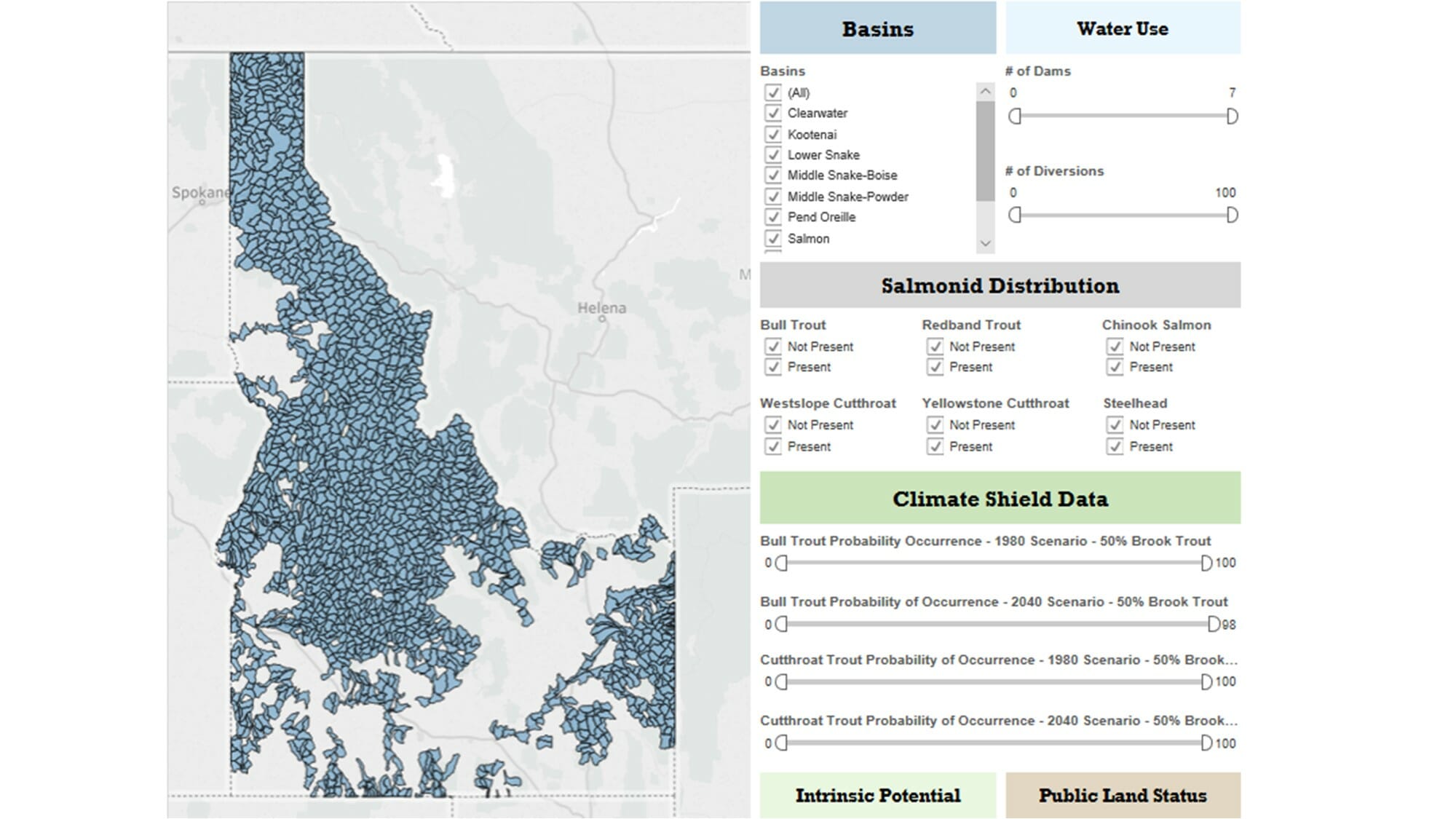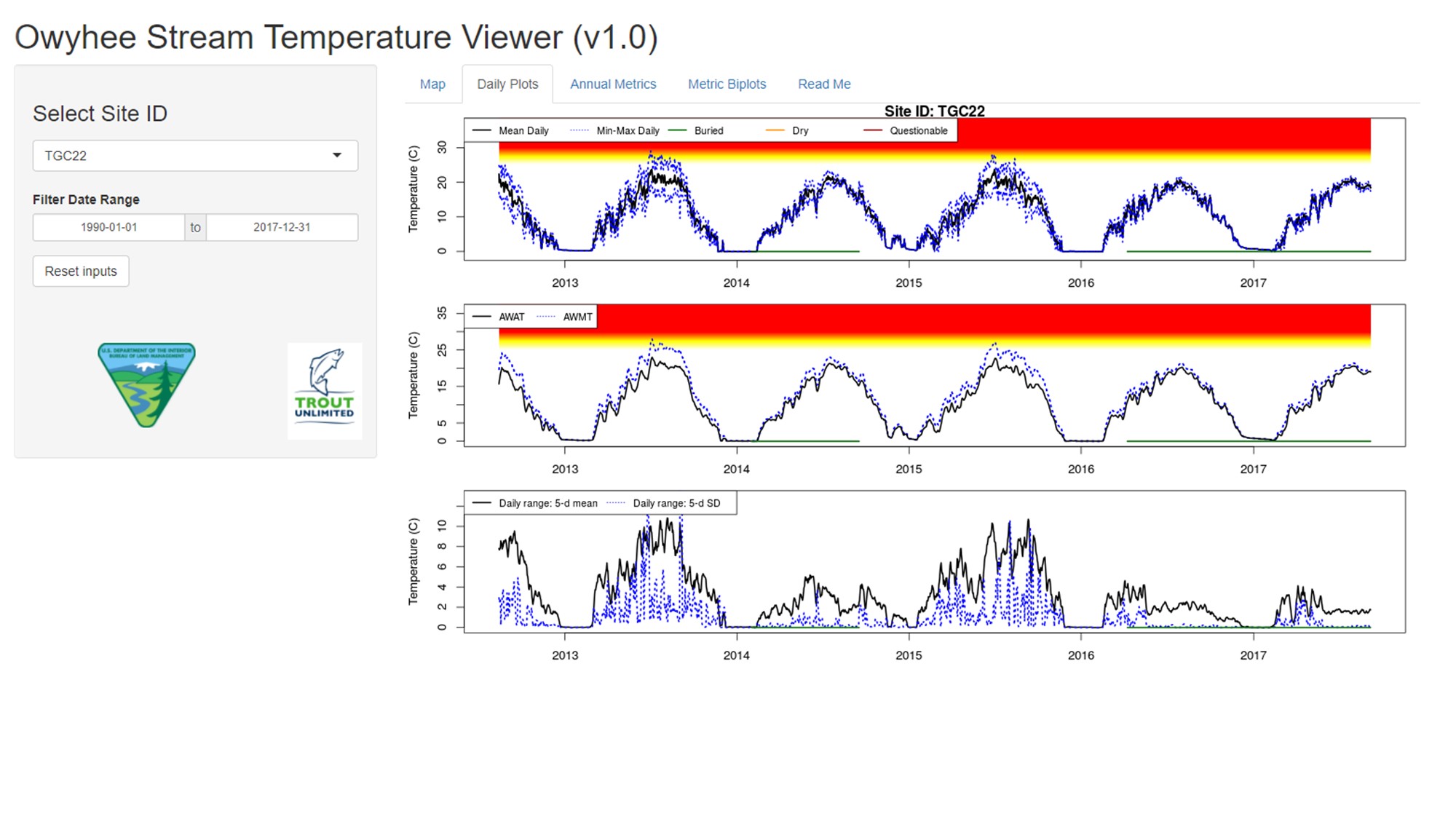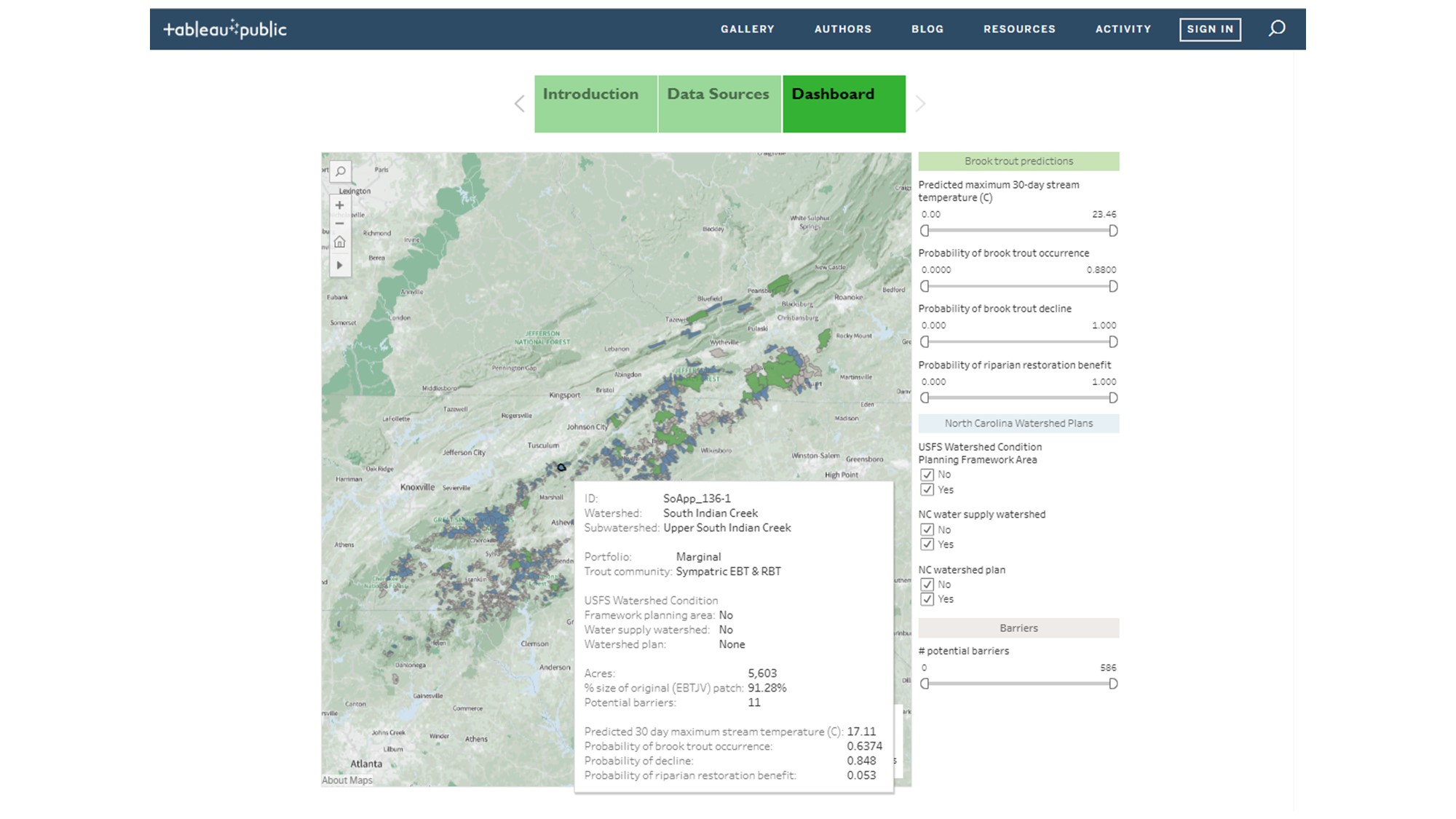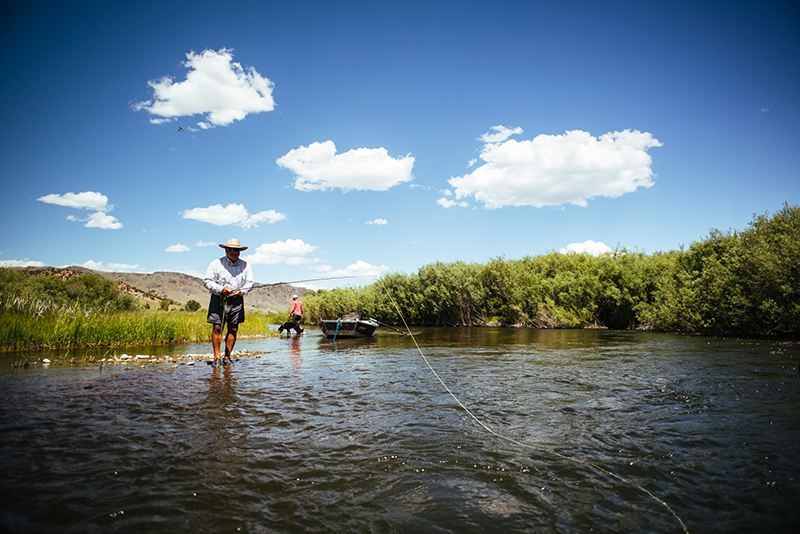Data visualization presents data in an interactive, pictorial or graphical format and can be useful for making large, complex datasets more accessible for decision makers or the general public. Decision support tools are data visualizations designed with a specific conservation question in mind. They gather relevant datasets and allow users to apply their own criteria for identifying opportunities and are often useful as outreach or facilitation tools when evaluating projects with partners.

Trout Unlimited’s Idaho Water Transaction Tool allows users to filter and query watersheds in Idaho based on US Forest Service Climate Shield forecasts of high-viability trout habitat, dam locations, and Idaho’s water rights database to quickly pinpoint the streams with the highest likelihood of providing functional and survivable native fish habitat into the future, and identify potential water transaction opportunities on dams or diversions which may be compromising that habitat.

TU scientists collected hourly stream temperature data for several basins in Idaho, Oregon, and Nevada and built a data visualization to facilitate access to the data. Users can filter by site or year and explore a variety of temperature metrics, including daily mean, minimum, and maximum.

TU developed a decision support tool to facilitate identifying culvert inventory or replacement opportunities based on brook trout population characteristics, stream temperature, riparian condition and other factors.

TU’s Colorado abandoned mine lands decision support tool helps TU staff, partners, and volunteers discover and prioritize opportunities for addressing environmental degradation caused by abandoned mines.


